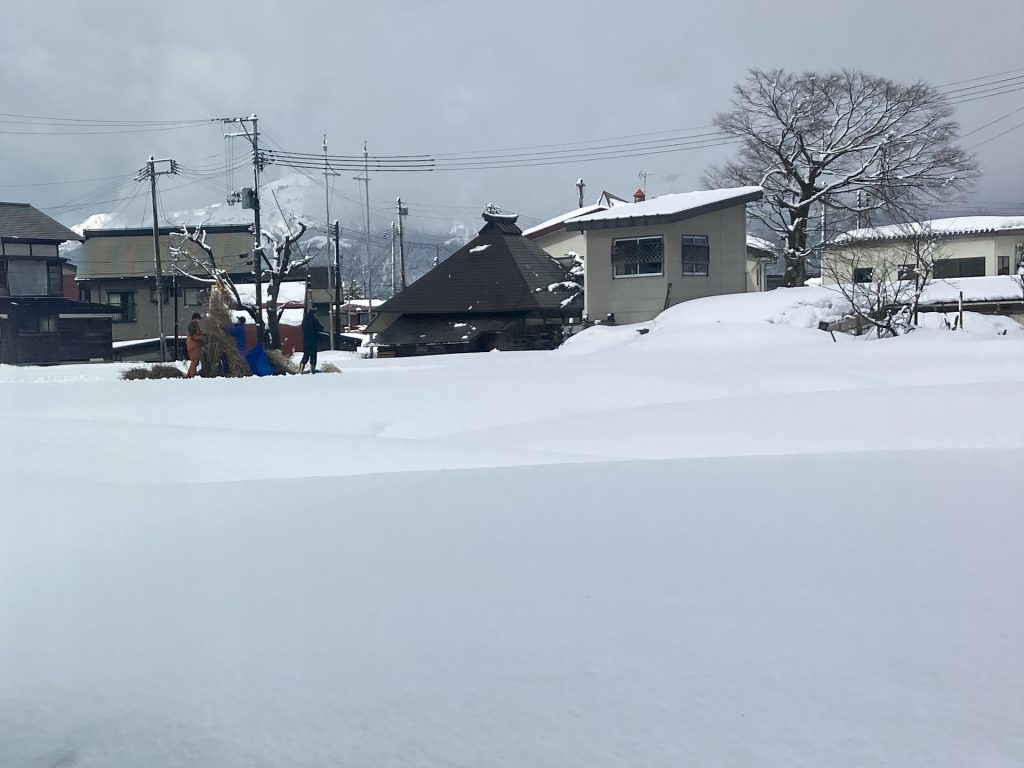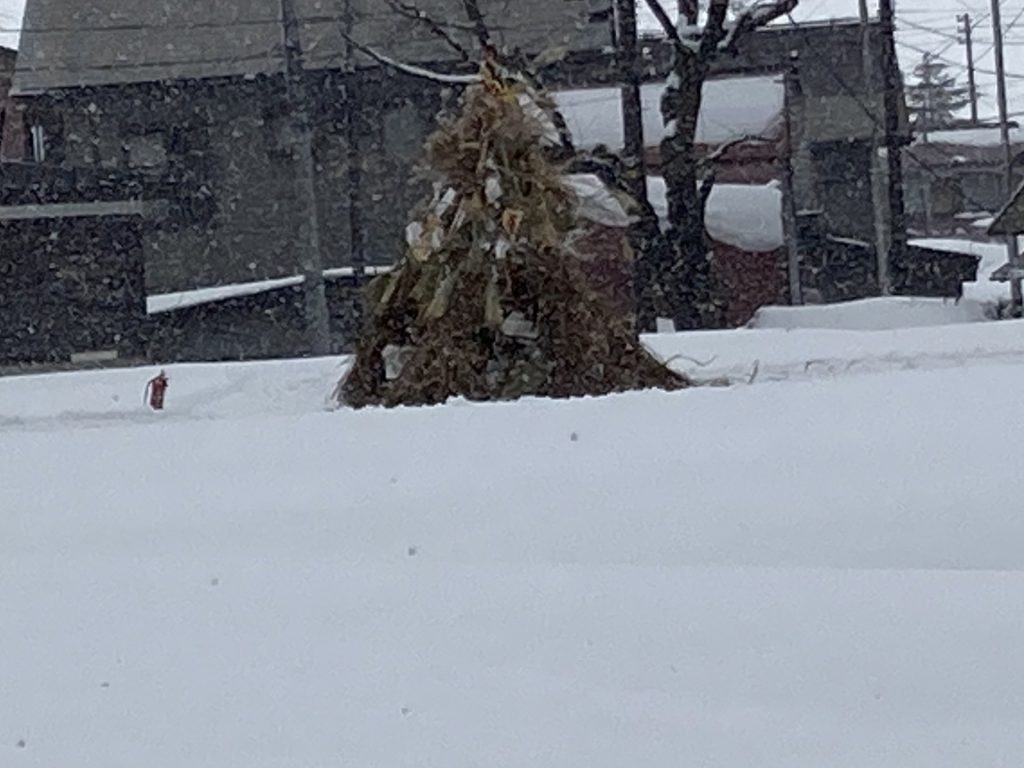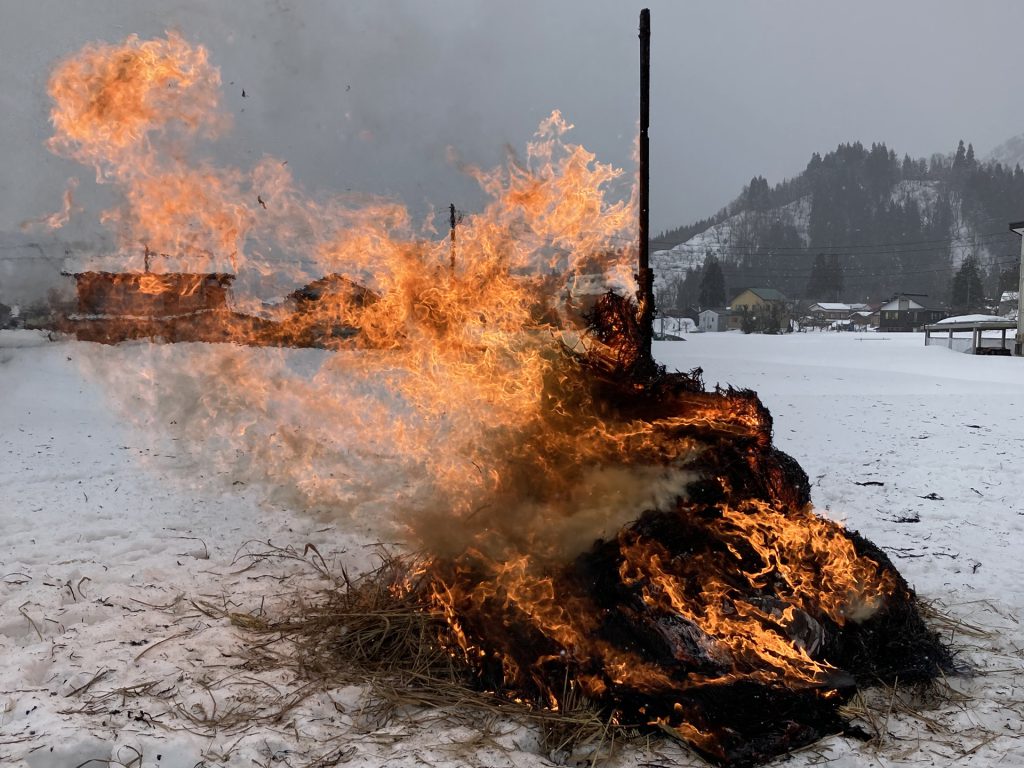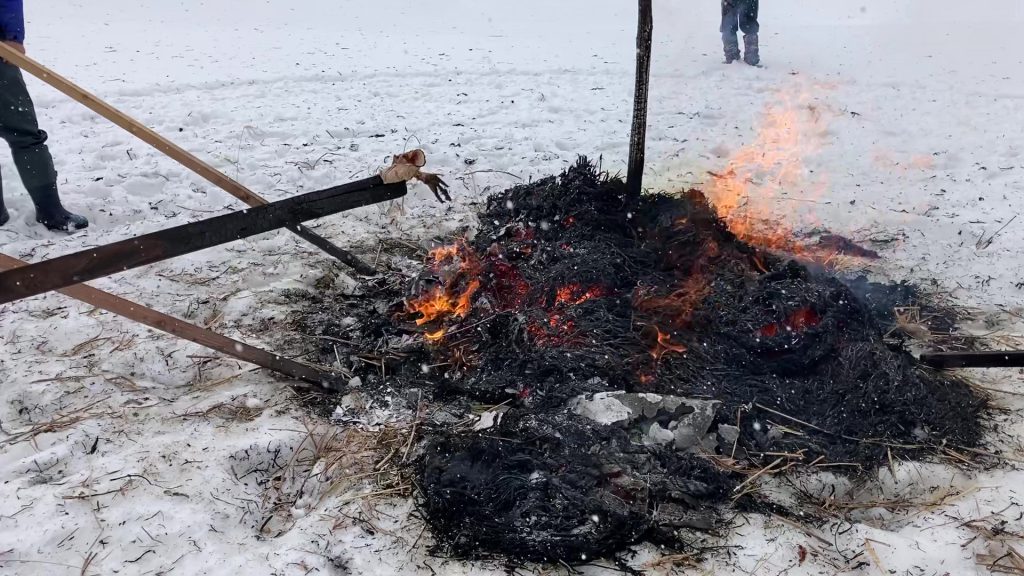The sai-no-kami ceremony (賽の神、さいのかみ、sainokami) is a traditional Japanese ceremony, with a few aspects that are rather unique to Niigata and some of the surrounding areas.
In some areas, a similar ceremony is held at a Shinto Shrine at the start of the new year, or around January 15th according to the traditional calendar.
Details about our community’s sai-no-kami ceremony can be found below.
In our community, this year’s sai-no-kami ceremony was held on March 6th.
Our community’s sai-no-kami ceremony takes place on top of a snow covered rice field.
This year, the snow was very deep. The first floors of neighboring buildings were buried in snow. The snow was packed down from the long winter, so people could easily walk on top of the snow. It is an interesting feeling to realize that the ground is so far below your feet.

The sai-no-kami ceremony is held to give thanks for the past year and to wish for good health, safety, bountiful harvests, and prosperity in the new year.
In extremely simplified terms, the sai-no-kami ceremony is like a bonfire.
A bonfire is built on a snow-covered rice field. Dried rice stalks from the past year’s harvest and branches are piled up and used as kindling for the fire.
People in the community donate their old prayer cards, amulets, etc. from the past year and the ceremony leaders add those items to the pile for the bonfire.

The pile is then set on fire with the hopes that the wishes for the new year will reach the heavens with the smoke.
In the interest of safety, firefighters and a firetruck were on standby at the site the whole time.

One of the aspects that makes Niigata’s sai-no-kami ceremony unique is that after the bonfire has burned down, people attach dried squid (スルメ、surume、焼イカ、yaki-ika) to long sticks and grill the squid over the embers.
It is similar to roasting marshmallows over a campfire… except that it is dried squid, tentacles and all, that is attached to a stick and grilled over the bonfire’s embers.
But why dried squid???
There are various speculations as to why dried squid is used in Niigata.
One of the speculations is that squid was one of the main fisheries along the coast of Niigata and around Niigata’s Sado Island. The squid was dried, making it an important food source during the long winters. Dried and preserved foods were a necessity for surviving the long, harsh winters when villages were isolated due to the very heavy snowfall.
Another possible reason for using dried squid is that it is a play on some words in Japanese which phonetically sound the same. Dried squid is called “surume”. However, “surume” (寿溜女, 寿を溜める女) can also have another meaning, which is super difficult for me to translate into English. It is said that the word is a combination of three Japanese characters, with each character representing a wish. Directly translated it could be meant to represent the three wishes: a wish for happiness and long life, a wish for continued togetherness, and a wish to be a good wife or mother1. Another possible translation could be something like “a woman who brings (accumulates) happiness and longevity”. In any case, it is not easy to translate… Basically it is considered by some to be auspicious and I guess that it is a wish for good health, longevity, and happiness.
All in all, these days perhaps one of the main reason to grill dried squid is that it is a tradition passed down through the years. And of course dried squid is quite yummy when it is grilled. 😊
A short video of dried squid being grilled on a stick at the sai-no-kami ceremony can be viewed on YouTube at ▷ https://youtu.be/oQROvD21bQY

1 Traditionally, dried squid was sometimes given as part of a wedding gift to represent those three wishes for the new family.